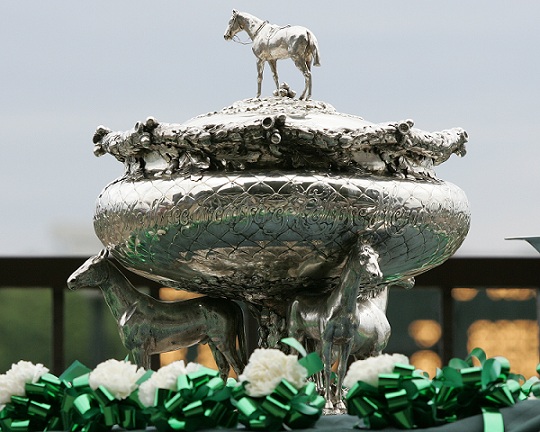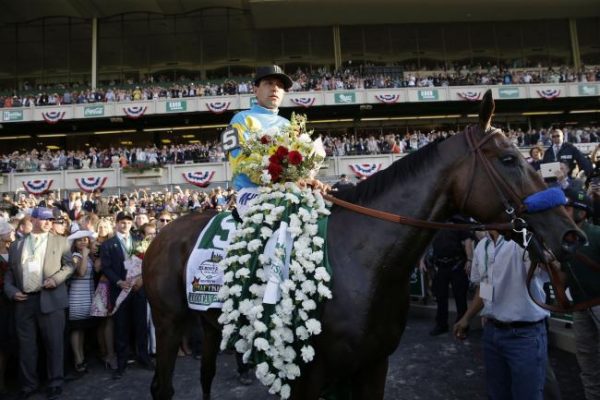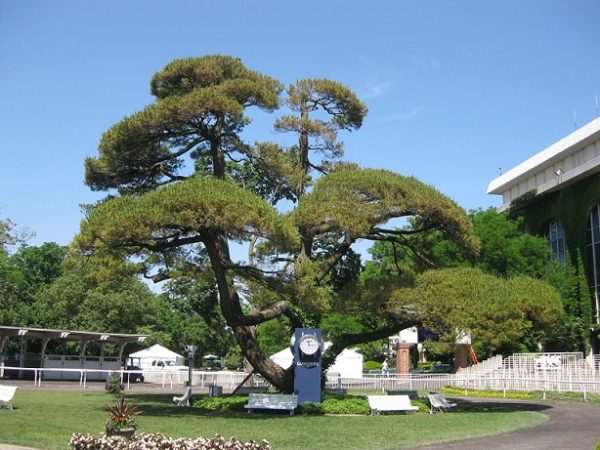The final stage of horse racing’s Triple Crown will commence this Saturday in Belmont Park, one of the sport’s most iconic sites for the 148th running of the Belmont Stakes.
Many outstanding memories have manifested from this race, but how did it all begin and become such a beloved annual spectacle? Let’s take an in-depth look below at the rich tapestry that the event has woven for us to further appreciate The Run for the Carnations.
For an overview of this week’s race itself, head on over to our complete preview as well as our horse and jockey analysis for the 2016 Belmont Stakes right after this.
Cash In on the Best Online Sportsbook Offers Now at TopBet!
History and Traditions of the Belmont Stakes
The Race’s Origin
The Belmont Stakes is named after accomplished banker and horse-racing aficionado August Belmont Sr., who financed the first running of the race at Jerome Park Racetrack Bronx, New York back in 1867. It wasn’t until 1905 that Belmont Park officially opened in Elmont, Long Island, where the race has been held since.The first Triple Crown winner was Sir Barton in 1919, when the term Triple Crown itself was yet to be coined and recognized. In 1930, Gallant Fox became the second thoroughbred to win the Kentucky Derby, the Preakness Stakes and the Belmont Stakes in the same year, and most experts believe this was the moment that “Triple Crown” became a common term for the winner of those three races.
The August Belmont Trophy

The winner of the Belmont Stakes is awarded with the August Belmont Trophy, named after the race’s founder. It was created in 1896 by famed jeweler Tiffany & Co. upon the request of August Belmont Jr. in honor of his late father.
The trophy is made of 350 ounces of sterling silver, is 27 inches in height and shaped like an acorn adorned with statuettes of foundation stallions Eclipse, Herod and Matchem. Beginning 1926, the winning owner of the Belmont Stakes may keep the trophy in their possession for one year before awarding the next winner of the race. The owner is also awarded a miniature version of the Belmont Trophy for permanent use and safekeeping.
The White Carnation Blanket

Though its actual date of origin is unknown, the blanket of white carnations awarded and draped over the winning thoroughbred is as symbolic of Belmont Stakes supremacy as the August Belmont Trophy itself.
Signifying love and luck, white carnations became the flower of choice for the race, and it takes about 700 of those carnations sewn on green velvet cloth to complete the 40-pound blanket.
Notable Past Winners
As the final leg of the Triple Crown series, the Belmont Stakes has had the honor and privilege of crowning 12 Triple-Crown winners:
- Sir Barton (1919)
- Gallant Fox (1930)
- Omaha (1935)
- War Admiral (1937)
- Whirlaway (1941)
- Count Fleet (1943)
- Assault (1946)
- Citation (1948)
- Secretariat (1973)
- Seattle Slew (1977)
- Affirmed (1978)
- American Pharoah (2015)
Apart from these legendary thoroughbreds, Man O’ War also made a name for itself in 1920, just a year after Sir Barton won the first-ever triple Crown. The August Belmont Jr.-owned and bred stallion won the Belmont Stakes that year by 20 lengths, which set a new American horse-racing record back then.
Other Fun Facts
- The Belmont Stakes is the oldest of the three Triple Crown races and the fourth-oldest stakes race in North America.
- In 1871, the Belmont Stakes was the first race in the United States to feature a post parade. In the years before that, horses were taken from the paddock area and straight to the post.
- Aside from being deemed as “The Run for the Carnations”, the Belmont Stakes is also commonly referred to as the “Test of the Champion” considering its length and prestige as the final race of the Triple Crown series.
- The White Pine at Belmont Park is almost as huge of an attraction as the race itself. The Japanese tree is estimated to be over 200 years old, and became the official logo of Belmont Park in 1968.

Create a betting account now to naturally place some stakes on the 2016 Belmont Stakes before it’s too late!










